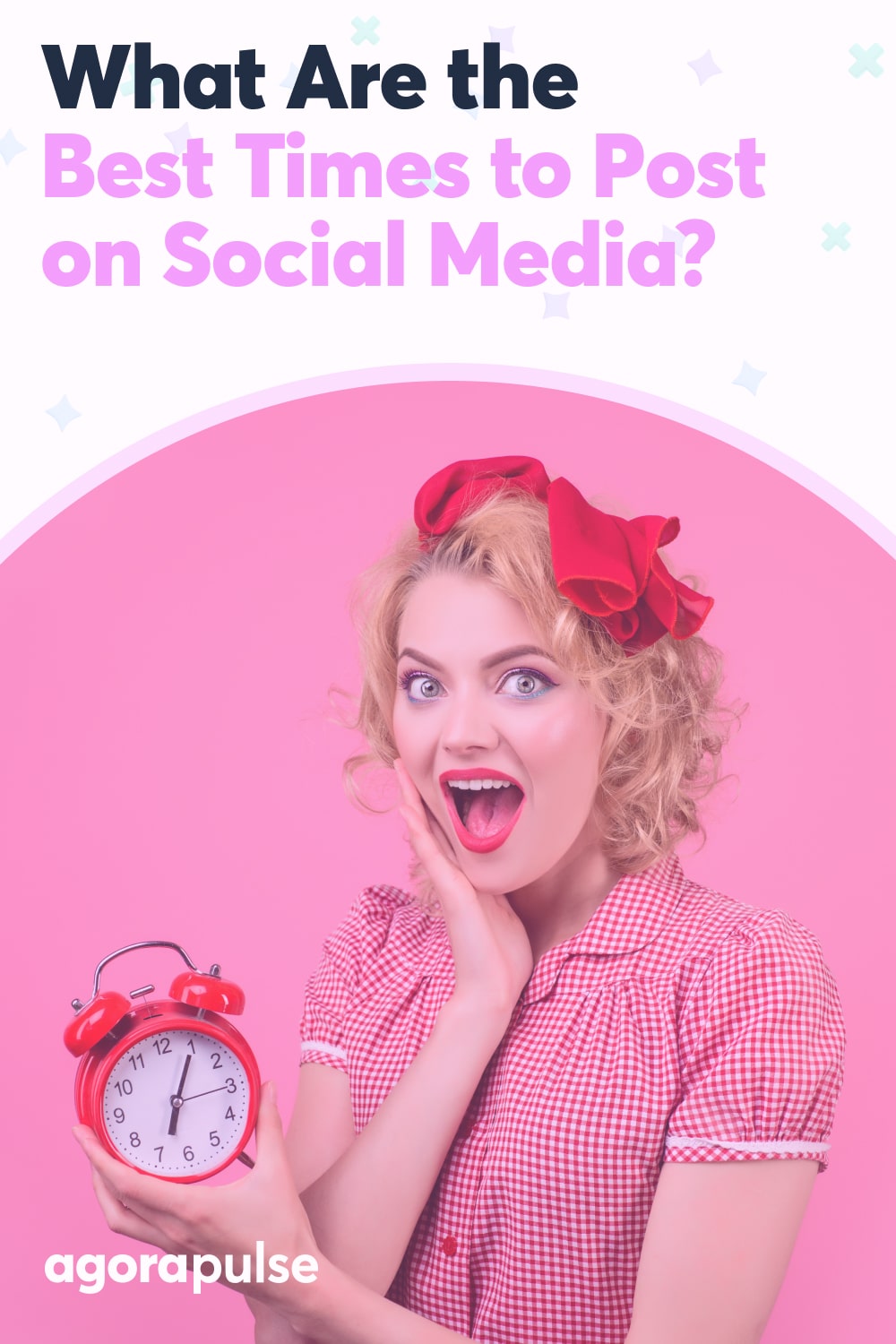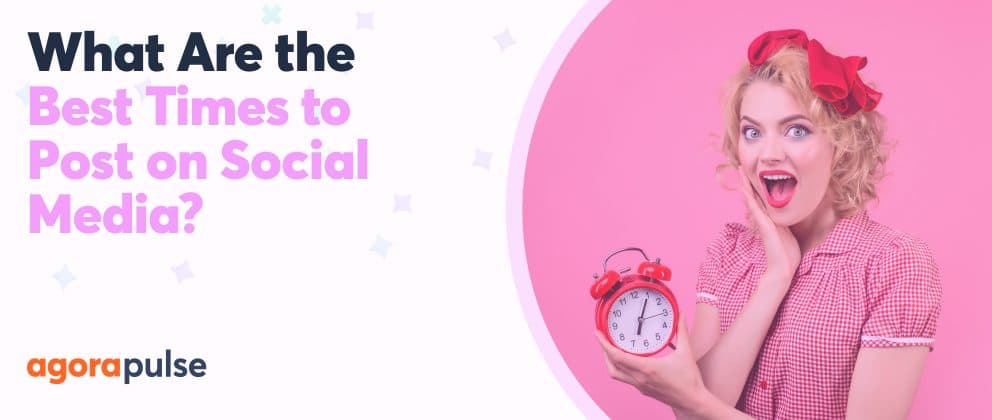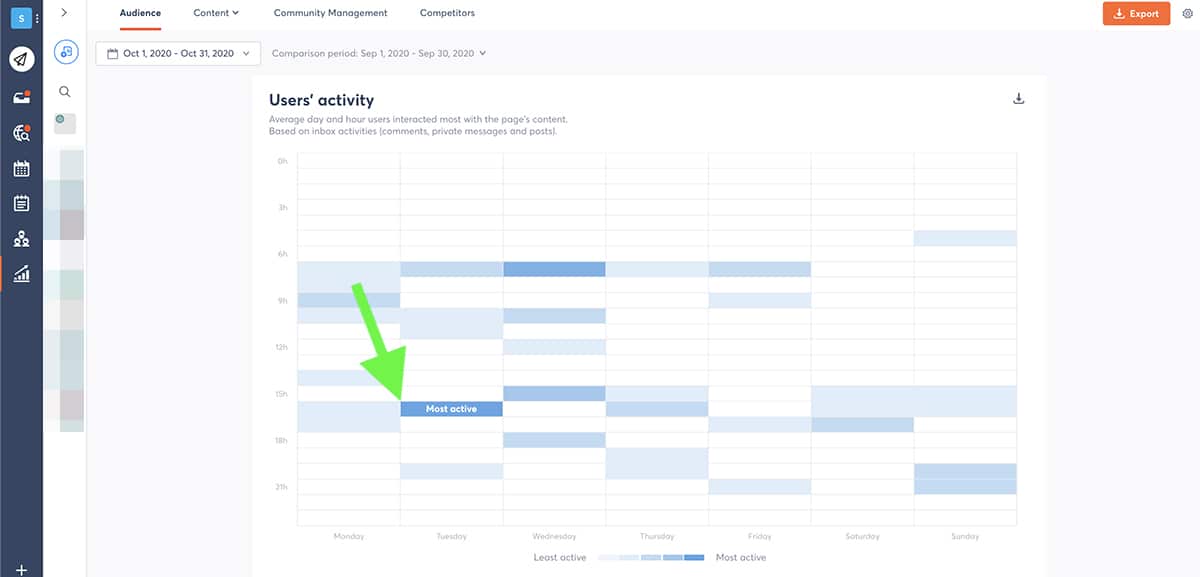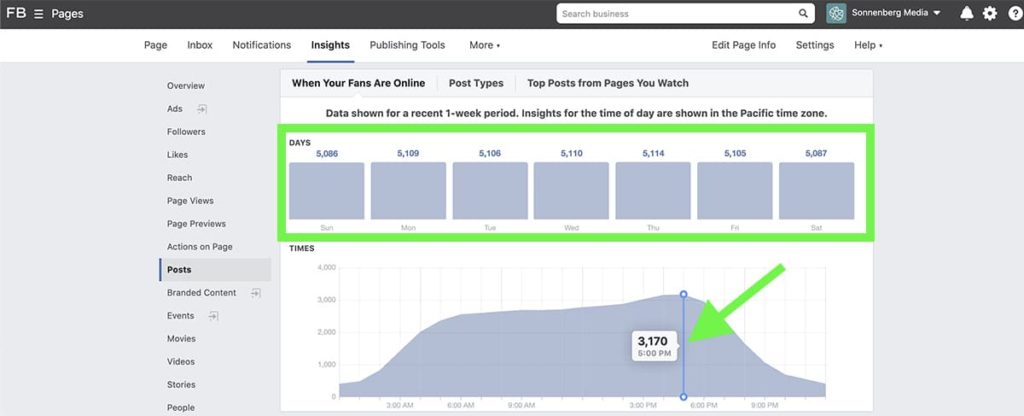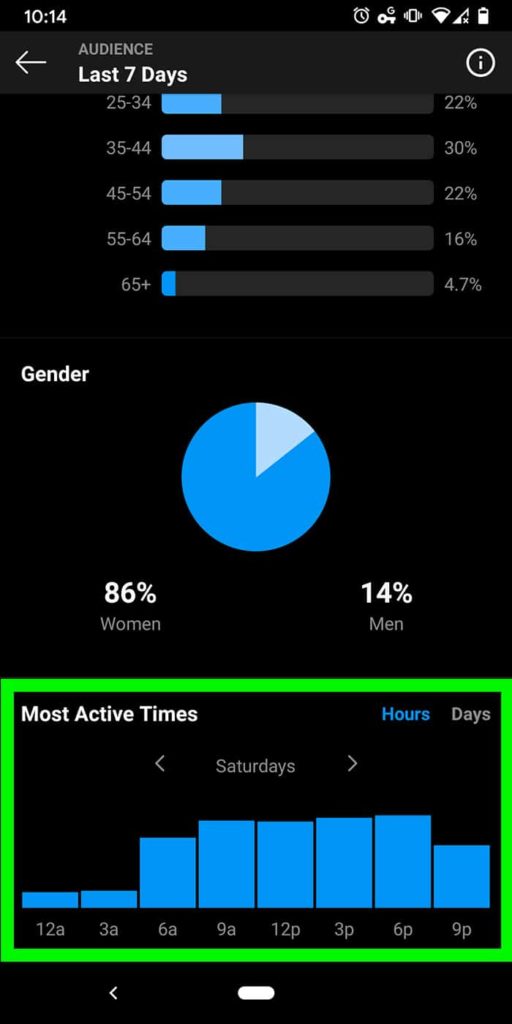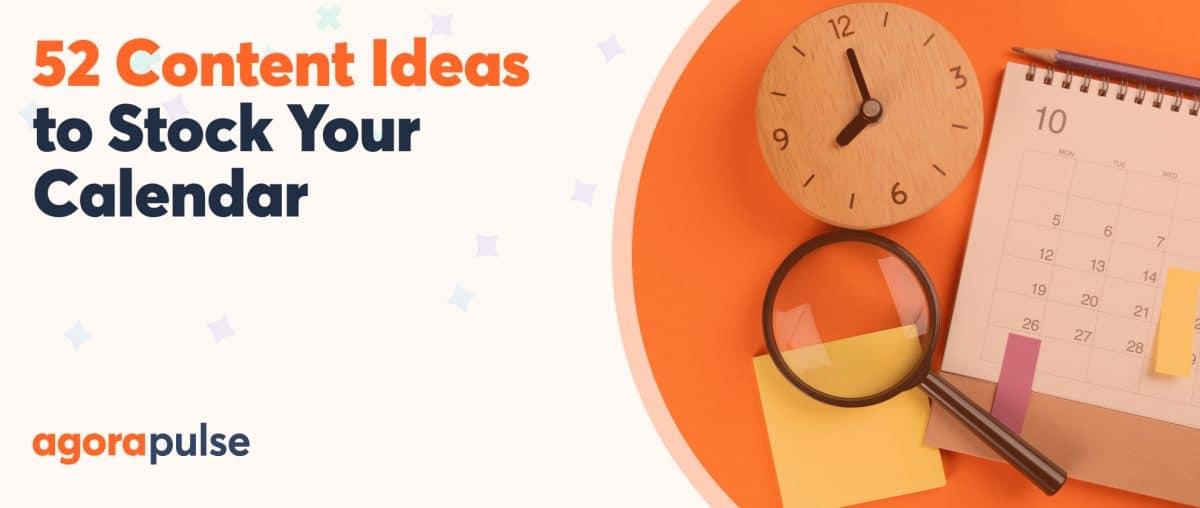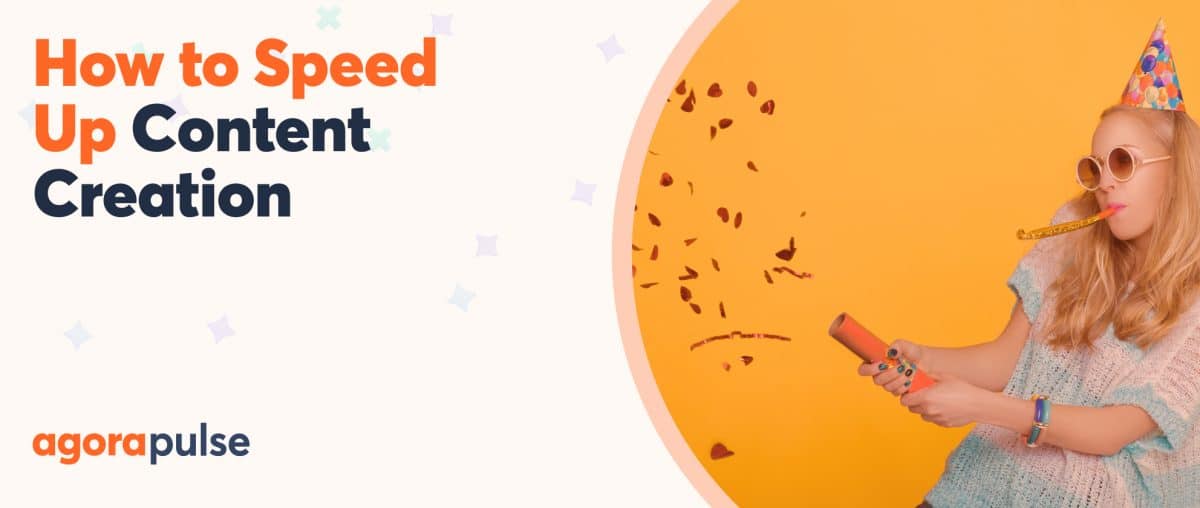What are the best times to post on social media? The answer can vary. Here’s a look at why that is and how to find the best time to post your social content.
The right time to publish depends on several factors, including:
- Your brand’s industry
- Your audience
- The regions you target
- The social channels you use
- Your campaign timeline
Although the absolute perfect time to share content doesn’t exist, with some research and testing, you can find the best times for your brand to post on social media.
hbspt.forms.create({
region: “na1”,
portalId: “8477337”,
formId: “7b5bb39f-cd97-4a83-9934-a41acb1ccb5e”
});
Why Is It Important to Post at the Right Time?
For social media managers, publishing content that fails to generate likes, shares, or clicks is a worst-case scenario.
You want the content you post to start conversations, invite followers to share with others, and encourage fans to take additional steps like purchase a product.
After all, the more engagement your content receives, the more likely it is to appear on your followers’ timelines.
Most social media algorithms prioritize content from pages that users frequently interact with and posts that generate high levels of engagement.
In addition, posts that your followers like, comment on, or share have a better chance of showing up on their friends’ newsfeeds, leading to greater reach. That means publishing highly engaging content can help your brand grow and allow you to reach your social media goals more quickly.
Yet writing appealing copy and developing eye-catching graphics only solves part of the problem.
Publishing great content at the wrong time means fewer views of your posts and limited opportunities to engage.
To reach your audience effectively, it’s critical to publish social media posts at the optimal times.
Best Times to Post on Facebook
For the average brand, the best days to post on Facebook are weekdays, typically from Monday to Thursday. Posting on Fridays and weekends tends to drive lower engagement, making these days less optimal for most brands.
Daytime is generally the best time to post on Facebook, according to OptinMonster.
For business-to-consumer (B2C) companies, noon is a popular time to post, as followers tend to be online and more likely to engage with content.
For business-to-business (B2B) companies, posting on the early side of standard work hours, such as between 9 a.m. and 2 p.m. tends to generate the best results.
Learn more about posting content:
Best Times to Post on Instagram
Instagram and Facebook have similar optimal times to post, but engagement on Instagram tends to peak in the middle of the week.
Wednesday is the best day to post on Instagram, and late morning between 10 and 11 a.m, is the ideal time to schedule your posts. However, you don’t have to limit your Instagram posts to Wednesday mornings only.
Instagram engagement tends to remain high from Tuesday through Thursday between 10 a.m. and 3 p.m.
After work is also a great time to post on Instagram, as users often browse their feeds during their evening downtime.
Learn more about posting on Instagram:
- How to Repost on Instagram
- 20 Social Media Post Types That Do Well (and How to Use Them)
- Use Instagram Memes to Increase Customer Engagement (and Show Your Sense of Humor)
Best Times to Post on LinkedIn
LinkedIn is primarily geared toward professional networking, so the platform tends to be busiest on weekdays, during most users’ standard work hours.
Because posting once daily is ideal for most brands, it’s important to get the timing right.
To get the best engagement on LinkedIn, plan to publish content on weekday mornings between 9 a.m. and noon.
As a general rule, avoid posting on LinkedIn after work hours or on weekends, especially Sundays.
Learn more about posting on LinkedIn:
Best Times to Post on Twitter
Twitter produces 500 million tweets each day and 6,000 tweets each second, which means it’s critical to make sure your content stands out.
Weekdays are the best times to post on Twitter, and weekdays are the worst, according to Social Media Today. During the week, aim to tweet during your followers’ lunch hour. Tweeting between 10 a.m. and 1 p.m. tends to be optimal for engagement.
If you want your followers to see and engage with your tweets, avoid posting in the late afternoon and beyond on Fridays.
You should also avoid tweeting after 8 p.m. on weekdays and weekends, as fewer users tend to be online.
Learn more about posting on Twitter:
- What to Tweet: Content Tips for Experience Social Media Managers
- How to Use Twitter Live Video to Expand Your Reach
hbspt.forms.create({
region: “na1”,
portalId: “8477337”,
formId: “b2b6f8ef-9f85-4b8f-ac2a-f510b34a3c46”
});
Best Times to Post on YouTube
Unlike most other social media platforms, YouTube posts usually generate the most engagement later in the week and on weekends. Because the average YouTube user tends to consume content in the evenings and on weekend mornings, they’re the best times to post on YouTube.
If you opt to post on a weekday, aim for Thursday or Friday afternoon so viewers can easily find your content in the evening.
If you prefer to post on weekends, schedule your upload for Saturday or Sunday morning between 9 and 11 a.m.
Learn more about posting on YouTube:
- How to Build an Incredible YouTube Strategy
- Your Content Recipe for YouTube Videos Your Audience Will Love
How to Find Your Best Times to Post on Social Media
The most popular times to post on social media don’t apply to every page. To improve reach and engagement, you may want to use social media management tools or native analytics to find the best times for your brand to post.
First, you’ll have to monitor the performance of your own posts.
You may find, for example, that list posts do particularly well on a Friday afternoon, or videos perform excellently on a Wednesday morning. Longer-term, you may discover that posting in a particular format works well on a bank holiday and that videos are more popular in spring.
After all, you best know your content, your goals, and your networks.
Whatever trends you find–and you will find them–and however inexplicable they may seem, make sure you make the most of them.
Use a social media tool
With a social media management solution like Agorapulse, you can quickly find the days and times when users interacted most with your page. Because Agorapulse bases its insights on the comments, mentions, and DMs your page received, it’s a much more accurate method for identifying the best times to post on social media.
For example, Tuesdays in the late afternoon is the most active time for my client’s Facebook audience.
Although best practices indicate that midday is the optimal time to post, publishing content on Tuesday afternoons and Sunday evenings work best for this page.
Likewise, I’d miss out on my Twitter audience’s most active times if I stuck firmly to Twitter best practices.
Although I do sometimes post around lunchtime, my Agorapulse report shows that Thursday evenings and any time on Sundays are the most active times for my Twitter page.
Check native analytics
Some social media platforms keep track of when your followers tend to be online and engage with your content. Social media channels like Facebook and Instagram offer audience insights that can help you determine the best times to post on social media.
For example, Facebook Insights reveals when your audience is online. When you log in to Facebook Business Manager, you can see how many of your fans are online each day of the week.
By clicking on a day, you can see an hour-by-hour breakdown. These native insights also show that the optimal times for my client’s audience fall in the late afternoon or early evening.
With an Instagram Business account, you can access similar insights. You can toggle between hours and days to see an hour-by-hour or day-by-day breakdown of your audience’s most active times.
However, be aware of the limitations of these insights.
Both Facebook and Instagram can tell you when your audience is most active, but the numbers are based on the previous seven days only.
In addition, these insights focus on when your audience is online—not when followers interact with your content.
If you want to make decisions about when to publish based on a wider range of data, a third-party social media tool can give you a better overview.
As you strive to find the optimal times for your audience, leverage all the tools you have.
Use platform best practices as a starting point, and use social media tools to home in on ideal times for your audience.
Review your audience data regularly, and experiment with new posting schedules to make sure you always know the best times to post on social media.
<
hbspt.forms.create({
region: “na1”,
portalId: “8477337”,
formId: “b2b6f8ef-9f85-4b8f-ac2a-f510b34a3c46”
});
Check which formats perform best and when
Keep in mind that certain types of content seem to do better than others at particular times of the year.
This makes a lot of sense when you think about how you use the Internet at different times of the year. For example, educational videos seem to do better in September, when the kids are returning to school, which is not at all surprising.
And around festivals and public holidays, more whimsical, fun content seems to perform better. Again, no surprises here.
The report also shows that lists and “why” posts seem to perform at a fairly similar level all year round, which is certainly worth bearing in mind.
Monitor and make the most of buying trends
Consumers often act in unison.
All businesses know this. Months when nothing much is happening are often followed by an influx of sales.
These trends are determined largely by external factors but also by your own publicity and awareness campaigns. For example, you can expect an increase in business activity immediately after a new marketing campaign launches.
What’s more, your consumers’ buying trends are likely to follow a pattern–be it weekly, monthly, or annually. Monitoring and analyzing these patterns will help you determine when to post particular content on social media.
If, for example, you are approaching a period of low activity, it may be wise to launch a social media promotion campaign to keep things ticking over.
Or, as you approach a busy period, perhaps maximize sales even more with some promotional material on items that don’t typically sell too well or you need to clear stock of.
Combined with the knowledge you will have accrued by tracking which formats work best and when, publishing content at the most opportune times in your consumers’ buying trends will mean that your posts are doubly effective: your content will be appealing, and your format timely.
In Conclusion
A series of well-placed, well-thought-out posts will do far more for your brand than simply barraging your followers with a torrent of posts.
Different industries can get away with posting more often than others. But no matter what industry you belong to, your content should always be high quality, original, and data-driven.
Creating a great social media campaign is not easy. It requires diligence, analysis, time, and intelligence. There are no shortcuts, and there’s no one-size-fits-all solution. Industry- and platform-general data can only get you so far. So, if you want to be the best, you’re going to have to make up the difference yourself.
The good news is that there’s an abundance of great tools to help you monitor your social media performance and plan out your campaigns. So what are you waiting for?
* * *
Get started on saving time and energy on your own social media management! Check out our free trial of Agorapulse to help you schedule, track, and measure all your social media efforts.
